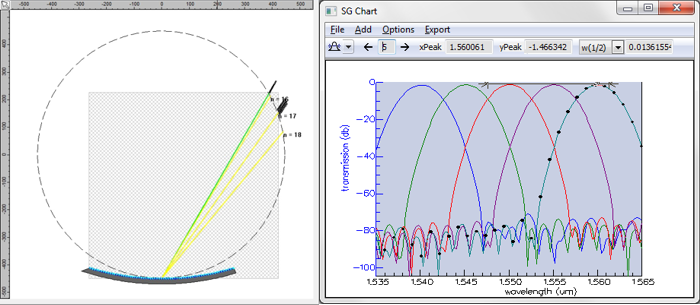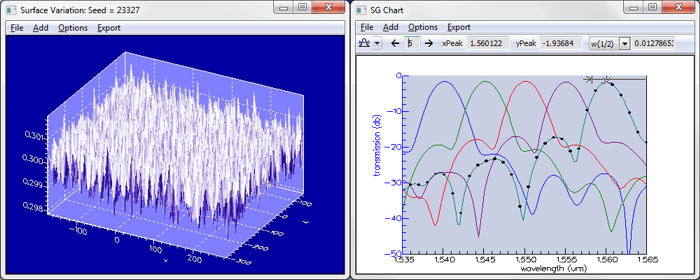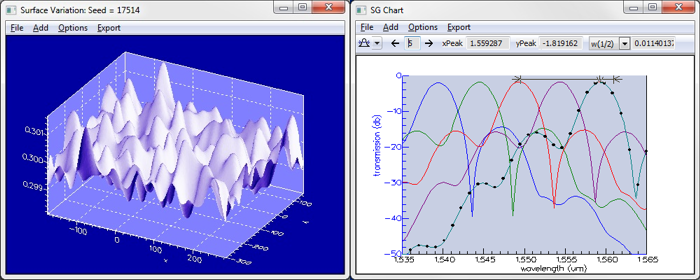EPIPPROPA WDM/DWDM model for AWGs and Echelle Gratings |
   |
Surface RoughnessModel the effect of variations of the layer thicknessesEpipprop allows you to model the effect of surface roughness in echelle gratings and planar concave gratings to a first order approximation, i.e. the effect of smooth variations in the thickness of the layers of the epitaxy. Any variation in the layer thicknesses will lead to a loss of phase coherence due to the spatial modulation of the effective index of the guiding modes across the free propagation region. This effect can be quite strong in high index contrast platforms with thin guiding layers. Epipprop gives you the tools to simulate this effect for a randomised surface characterised by a coherence length and root mean squared thickness variation. Here we show a demonstration of the effect of surface roughness in an SOI platform device with 300um thick Si. The roughness is applied to the Si layer in the free propagation region. No surface roughness:
Surface roughness, coherence length 5um:
Surface roughness, coherence length 25um:
|






